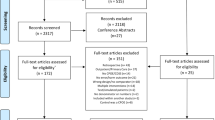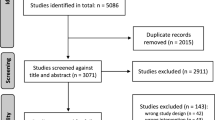Abstract
Context
Computerized physician order entry (CPOE) with clinical decision support (CDS) has been promoted as an effective strategy to prevent the development of a drug injury defined as an adverse drug event (ADE).
Objective
To systematically review studies evaluating the effects of CPOE with CDS on the development of an ADE as an outcome measure.
Data Sources
PUBMED versions of MEDLINE (from inception through March 2007) were searched to identify relevant studies. Reference lists of included studies were also searched.
Methods
We searched for original investigations, randomized and nonrandomized clinical trials, and observational studies that evaluated the effect of CPOE with CDS on the rates of ADEs. The studies identified were assessed to determine the type of computer system used, drug categories being evaluated, types of ADEs measured, and clinical outcomes assessed.
Results
Of the 543 citations identified, 10 studies met our inclusion criteria. These studies were grouped into categories based on their setting: hospital or ambulatory; no studies related to the long-term care setting were identified. CPOE with CDS contributed to a statistically significant (P ≤ .05) decrease in ADEs in 5 (50.0%) of the 10 studies. Four studies (40.0%) reported a nonstatistically significant reduction in ADE rates, and 1 study (10.0%) demonstrated no change in ADE rates.
Conclusions
Few studies have measured the effect of CPOE with CDS on the rates of ADEs, and none were randomized controlled trials. Further research is needed to evaluate the efficacy of CPOE with CDS across the various clinical settings.

Similar content being viewed by others
References
Poon EG, Blumenthal D, Jaggi T, Honour MM, Bates DW, Kaushal R. Overcoming barriers to adopting and implementing computerized physician order entry systems in U.S. hospitals. Health Aff. 2004;23:184–90.
Kaushal R, Bates DW. Information technology and medication safety: what is the benefit? Qual Saf Health Care. 2002;11:261–5.
Kaushal R, Shojania KG, Bates DW. Effects of computerized physician order entry and clinical decision support systems on medication safety: a systematic review. Arch Intern Med. 2003;163:1409–16.
Rochon PA, Field TS, Bates DW, et al. Computerized physician order entry with clinical decision support in the long-term care setting: insights from the Baycrest Centre for Geriatric Care. J Am Geriatr Soc. 2005;53:1780–9.
Kohn LT. To Err Is Human: Building a Safer Health System. Washington, DC: National Academy Press; 2000.
Fortescue EB, Kaushal R, Landrigan CP, et al. Prioritizing strategies for preventing medication errors and adverse drug events in pediatric inpatients. Pediatrics. 2003;111:722–9.
Gurwitz JH, Field TS, Judge J, et al. The incidence of adverse drug events in two large academic long-term care facilities. Am J Med. 2005;118:251–8.
Kuperman GJ, Bobb A, Payne TH, et al. Medication-related clinical decision support in computerized provider order entry systems: a review. J Am Med Inform Assoc. 2007;14:29–40.
Gesteland PH, Nebeker JR, Gardner RM. These are the technologies that try men’s souls: common-sense health information technology. Pediatrics. 2006;117:216–7.
Sittig DF, Ash JS, Zhang J, Osheroff JA, Shabot MM. Lessons from “Unexpected increased mortality after implementation of a commercially sold computerized physician order entry system”. Pediatrics. 2006;118:797–801.
Jacobs BR, Brilli RJ, Hart KW. Perceived increase in mortality after process and policy changes implemented with computerized physician order entry. Pediatrics. 2006;117:1451–2.
Longhurst C, Sharek P, Hahn J, Sullivan J, Classen D. Perceived increase in mortality after process and policy changes implemented with computerized physician order entry. Pediatrics. 2006;117:1450–1.
Rosenbloom ST, Harrell FE Jr., Lehmann CU, Schneider JH, Spooner SA, Johnson KB. Perceived increase in mortality after process and policy changes implemented with computerized physician order entry. Pediatrics. 2006;117:1452–5.
Bates DW, Boyle DL, Vliet MVV, Schneider J, Leape L. Relationship between medication errors and adverse drug events. J Gen Intern Med. 1995;10:199–205.
Bates DW, Cullen DJ, Laird N, et al. Incidence of adverse drug events and potential adverse drug events. Implications for prevention. JAMA. 1995;274:29–34.
Gandhi TK, Weingart SN, Borus J, et al. Adverse drug events in ambulatory care. N Engl J Med. 2003;348:1556–64.
Gurwitz JH, Field TS, Harrold LR, et al. Incidence and preventability of adverse drug events among older persons in the ambulatory setting. JAMA. 2003;289:1107–16.
Bates DW, Spell N, Cullen DJ, et al. The costs of adverse drug events in hospitalized patients. Adverse Drug Events Prevention Study Group. JAMA. 1997;277:307–11.
Classen DC, Pestotnik SL, Evans RS, Lloyd JF, Burke JP. Adverse drug events in hospitalized patients. Excess length of stay, extra costs, and attributable mortality. JAMA. 1997;277:301–6.
Field TS, Gilman BH, Subramanian S, Fuller JC, Bates DW, Gurwitz JH. The costs associated with adverse drug events among older adults in the ambulatory setting. Med Care. 2005;43:1171–6.
Institute of Medicine. Preventing Medication Errors: Quality Chasm SeriesWashington, DC: National Academy Press; 2007.
Downs SH, Black N. The feasibility of creating a checklist for the assessment of the methodological quality both of randomised and non-randomised studies of health care interventions. J Epidemiol Community Health. 1998;52:377–84.
Bates DW, Leape LL, Cullen DJ, et al. Effect of computerized physician order entry and a team intervention on prevention of serious medication errors. JAMA. 1998;280:1311–6.
Bates DW, Teich JM, Lee J, et al. The impact of computerized physician order entry on medication error prevention. J Am Med Inform Assoc. 1999;6:313–21.
Colpaert K, Claus B, Somers A, Vandewoude K, Robays H, Decruyenaere J. Impact of computerized physician order entry on medication prescription errors in the intensive care unit: a controlled cross-sectional trial. Crit Care. 2006;10:R21.
Evans RS, Classen DC, Pestotnik SL, Clemmer TP, Weaver LK, Burke JP. A decision support tool for antibiotic therapy. Proceedings from the 19th Annual Symposium on Computer Applications in Medical Care. 1995:651–5.
Evans RS, Pestotnik SL, Classen DC, et al. A computer-assisted management program for antibiotics and other antiinfective agents. N Engl J Med. 1998;338:232–8.
Evans RS, Pestotnik SL, Classen DC, Horn SD, Bass SB, Burke JP. Preventing adverse drug events in hospitalized patients. Ann Pharmacother. 1994;28:523–7.
Mullett CJ, Evans RS, Christenson JC, Dean JM. Development and impact of a computerized pediatric antiinfective decision support program. Pediatrics. 2001;108:E75.
Peterson JF, Kuperman GJ, Shek C, Patel M, Avorn J, Bates DW. Guided prescription of psychotropic medications for geriatric inpatients. Arch Intern Med. 2005;165:802–7.
Steele AW, Eisert S, Witter J, et al. The effect of automated alerts on provider ordering behavior in an outpatient setting. PLoS Med. 2005;2:e255.
Upperman JS, Staley P, Friend K, et al. The impact of hospitalwide computerized physician order entry on medical errors in a pediatric hospital. J Pediatr Surg. 2005;40:57–9.
Garg AX, Adhikari NK, McDonald H, et al. Effects of computerized clinical decision support systems on practitioner performance and patient outcomes: a systematic review. JAMA. 2005;293:1223–38.
Hunt DL, Haynes RB, Hanna SE, Smith K. Effects of computer-based clinical decision support systems on physician performance and patient outcomes: a systematic review. JAMA. 1998;280:1339–46.
Donner A, Klar N. Design and Analysis of Cluster Randomization Trials in Health Research. New York: Oxford University Press; 2000.
Rochon PA, Field TS, Bates DW, et al. Clinical application of a computerized system for physician order entry with clinical decision support to prevent adverse drug events in long-term care. CMAJ. 2006;174:52–4.
Judge J, Field TS, Deflorio M, et al. Prescribers’ responses to alerts during medication ordering in the long term care setting. J Am Med Inform Assoc. 2006;13:385–90.
Ganjavi H, Herrmann N, Rochon PA, et al. Adverse drug events in cognitively impaired elderly patients. Dement Geriatr Cogn Disord. 2007;23:395–400.
Naranjo CA, Busto U, Sellers EM, et al. A method for estimating the probability of adverse drug reactions. Clin Pharmacol Ther. 1981;30(2)239–45.
Acknowledgments
The authors would like to thank Mary Thomson Ph.D. for her assistance with the identification of original investigations for inclusion in our sample and Peter Anderson for his assistance with the manuscript preparation. The study was supported by grants (HS010481 and HS15430) from the Agency for Healthcare Research and Quality, Bethesda, MD, USA.
Conflict of Interest
None disclosed.
Author information
Authors and Affiliations
Corresponding author
Rights and permissions
About this article
Cite this article
Wolfstadt, J.I., Gurwitz, J.H., Field, T.S. et al. The Effect of Computerized Physician Order Entry with Clinical Decision Support on the Rates of Adverse Drug Events: A Systematic Review. J GEN INTERN MED 23, 451–458 (2008). https://doi.org/10.1007/s11606-008-0504-5
Published:
Issue Date:
DOI: https://doi.org/10.1007/s11606-008-0504-5




